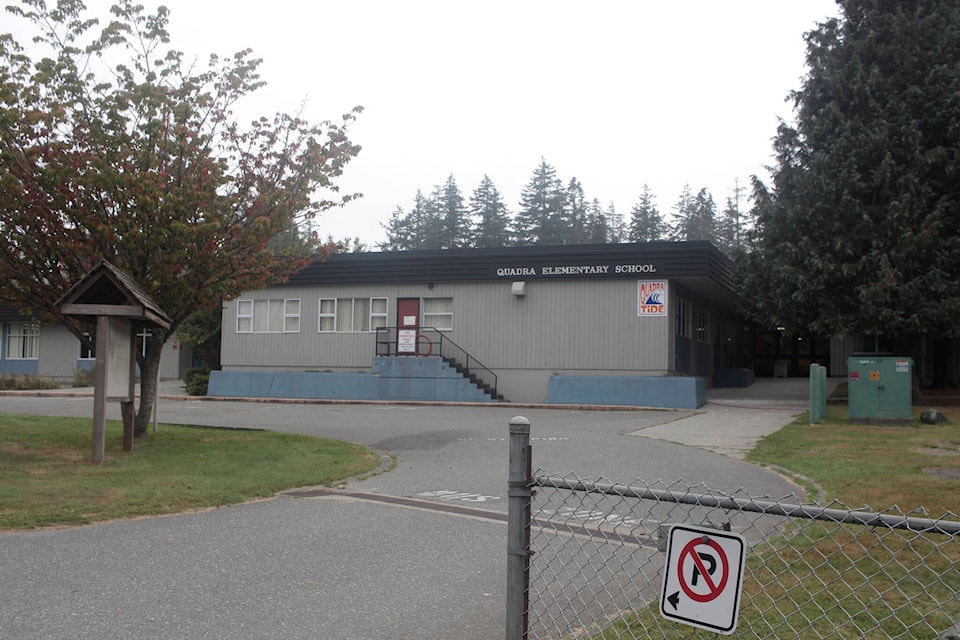Quadra Island Elementary’s schoolyard is getting a very unique — and very green — face lift.
On Oct. 5, students and community leaders are invited to join a planting day at a new wetland in the schoolyard, in partnership with the We Wei Kai First Nation, where participants will seed and plant native vegetation and remove invasive species from the site.
Project designer Miranda Cross said that 100 plus hours were put together on the project on the initial planning stages, from her first meetings with teacher Sheldon Etheridge.
“When I first went to the school last September, there was some water in a deeper pool in one of the ditches around the school,” Cross says “It had been dug out by somebody. The presence of deep ditches, containing water in an otherwise dry time of year, the fact that there’s an ephemeral stream clued me in that we could remodel this as a wetland.”
In dealing with these projects, Cross says it is possible to see things like garbage during excavation, but there was no such worry in re-contouring this site.
“We found topsoil, 1.6 metres worth,” says Cross “We were able to excavate it, and re-contour it to the site.”
Funding for this project was no small bill. However, there were plenty of support, with both the provincial and federal government contributing funds, as well as private donors, such as the BC Wildlife Federation, and Climate Change Canada.
“It’s a good mix of donors from both the private and public sectors,” said BC Wildlife Federation communications representative Dominique Bowden “Part of the funding is not only going to these wetlands, but other conservation projects as well.”
Part of the ceremony will feature the planting of native plants that once inhabited the historic wetlands where the school now stands. Those include (but are not limited to) wild strawberries, trail blackberries, and Saskatoon berry
“Part of the work we’re doing is to meaningfully engage with Indigenous communities,” says Cross “Prior to the start of construction, we consulted with Native leaders. There was an event at the site where we hosted a group of Elders, and asked for guidance, their consultation, and wisdom.”
Cross sees benefits, not only from an environmental standpoint, but from an educational one as well.
“There’s a tremendous value, to have an ecosystem like a wetland right at a school,” says Cross. “Teachers can go out every day, or once a week. From observing wildlife, to studying life cycles of amphibians.”
RELATED:
edward.hitchins@campbellrivermirror.com
Like us on Facebook and follow us on Twitter
